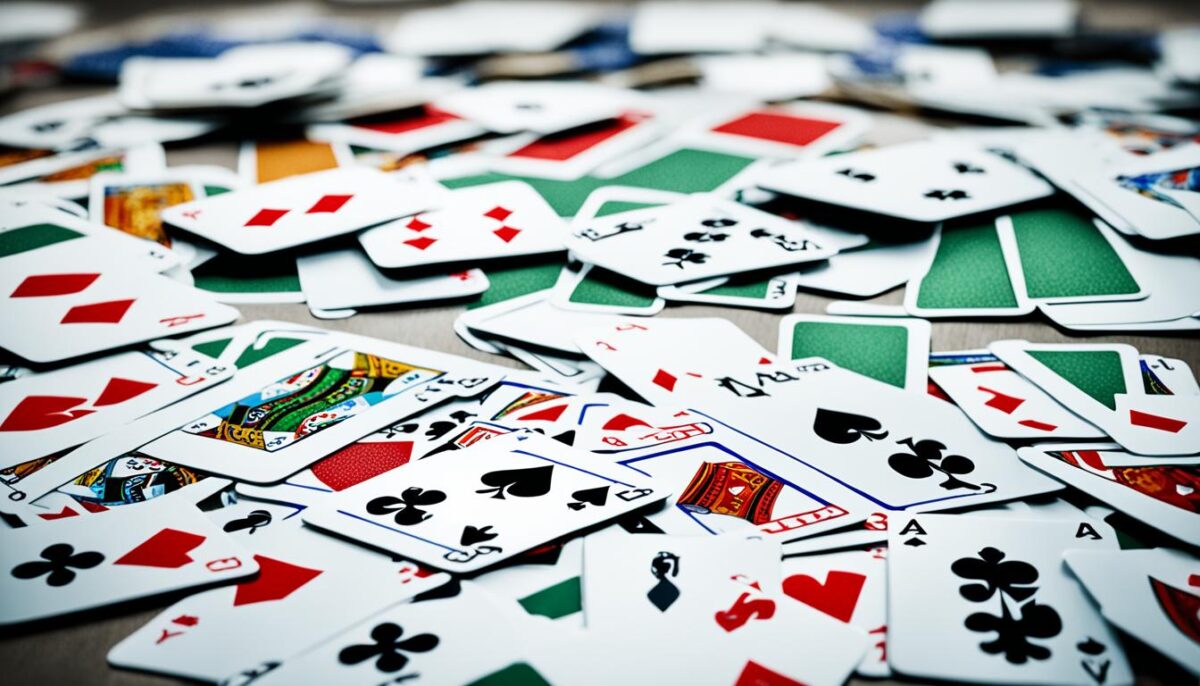Welcome to our exploration of Rummy, a classic card game that has provided hours of fun and excitement for generations. Whether you’re a seasoned player or new to the game, Rummy offers a perfect blend of strategy, skill, and entertainment.
Rummy is a versatile card game that can be enjoyed with friends and family or as a competitive endeavor. Its rich history and widespread popularity have cemented Rummy as one of the most beloved card games of all time.

In this series, we will delve into the rules, strategies, and techniques that will help you master the art of Rummy. Whether you’re looking to improve your skill level or simply have a good time, our comprehensive guide will ensure you are well-equipped to enjoy the game to its fullest.
Join us as we explore the intricacies of Rummy, uncovering the secrets of successful gameplay and the joy it brings. Let’s embark on this exciting journey and unlock the strategies that will elevate your Rummy experience. Get ready to shuffle, meld, and outsmart your opponents as we dive into the world of Rummy!
Understanding Rummy Rules and Gameplay
In order to fully enjoy the game of Rummy, it’s crucial to understand the rules and gameplay. Rummy is typically played with two to six players and requires a standard deck of 52 cards. The objective of the game is to form sets and sequences of cards and be the first player to get rid of all your cards.
Basic Rules
The game starts with each player being dealt a certain number of cards, depending on the variation being played. The remaining cards are placed face-down to form the draw pile, and the top card is turned face-up to create the discard pile. Players take turns, following a clockwise direction.
The game revolves around the concept of melding, which involves forming sets and sequences of cards. A set is a group of three or four cards of the same rank, while a sequence is a group of three or more consecutive cards of the same suit. For example, a set could be three Jacks, and a sequence could be 5, 6, 7 of Hearts.
Players can pick up cards from either the draw pile or the discard pile. When picking up from the discard pile, a player must take the top card and subsequently discard a card from their hand. When picking up from the draw pile, a player can choose to keep the card or discard a different one.
Utilizing the Discard Pile
The discard pile in Rummy can be a valuable resource for players. By observing the cards being discarded by opponents, players can gain insights into their strategies and potential melding combinations. It’s important to pay attention to the cards being discarded and plan your moves accordingly.
Additionally, the discard pile can be used strategically to get rid of cards that are no longer needed. If a player has a card that they believe their opponents might need to complete a set or sequence, they can strategically discard it to hinder their opponents’ progress.

Example of Sets and Sequences
| Player | Set | Sequence |
|---|---|---|
| Player 1 | 7♥ 7♠ 7♣ | 8♦ 9♦ 10♦ J♦ |
| Player 2 | Q♠ Q♦ Q♥ | 5♣ 6♣ 7♣ |
| Player 3 | K♥ K♦ K♠ | 10♠ J♠ Q♠ |
In the above table, each player has formed both sets and sequences. Player 1 has a set of 7s and a sequence of diamonds, while Player 2 has a set of Queens and a sequence of clubs. Player 3, on the other hand, has a set of Kings and a sequence of spades. These examples demonstrate the different combinations players can create in Rummy.
By understanding the rules and gameplay of Rummy, as well as the concepts of melding and utilizing the discard pile strategically, players can embark on an exciting journey of skill and strategy. In the next section, we will delve deeper into advanced Rummy strategies to help you outplay your opponents and improve your chances of winning.
Mastering Rummy Strategy and Outplaying Opponents
As you become more experienced in playing Rummy, it becomes crucial to develop a strong strategic mindset. By adopting effective techniques to improve your hand and analyzing your opponents’ moves, you can gain an edge in this captivating card game.
One key aspect of Rummy strategy is hand improvement. By constantly reassessing your hand and looking for opportunities to meld new sets or sequences, you can enhance your chances of winning. Keep an eye on the discard pile as well, as it can provide valuable cards that can complement your existing melds.
Bluffing can also be a powerful tool in Rummy. By intentionally discarding cards that might mislead your opponents, you can create confusion and disrupt their strategies. However, bluffing should be used sparingly and at the right moments to maximize its impact.
Furthermore, analyzing your opponents’ moves is essential for success in Rummy. Pay attention to the cards they discard and pick up, and try to deduce their melds and potential strategies. By understanding their gameplay patterns, you can anticipate their moves and adjust your own strategy accordingly.
In conclusion, mastering Rummy strategy requires a combination of hand improvement, bluffing, and opponent analysis. By employing these techniques effectively, you can elevate your gameplay and outplay your opponents. So, start practicing and refining your strategies to become a formidable Rummy player!
